Research topics at UC Irvine
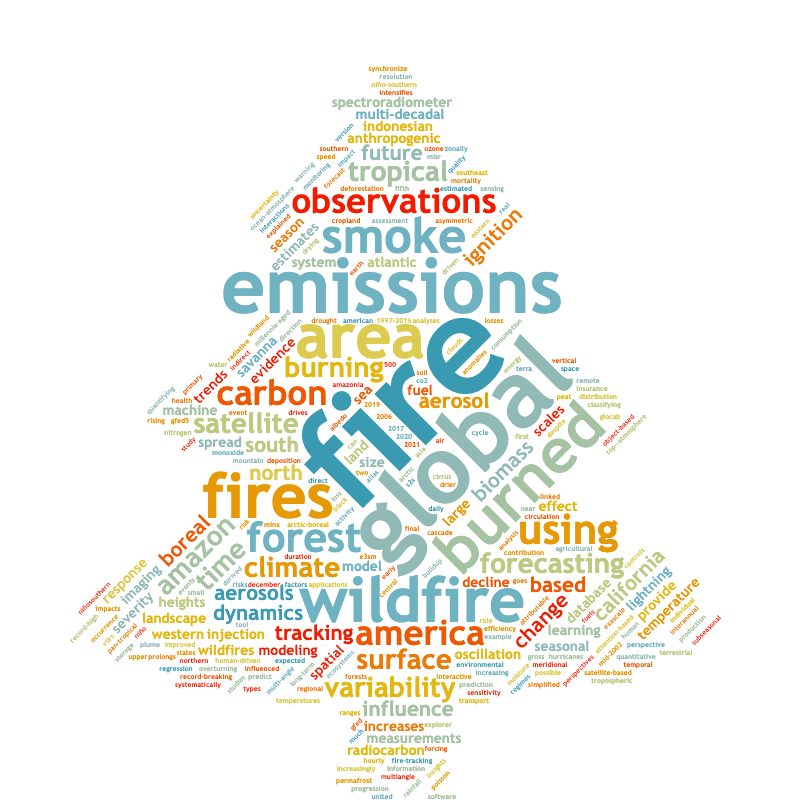
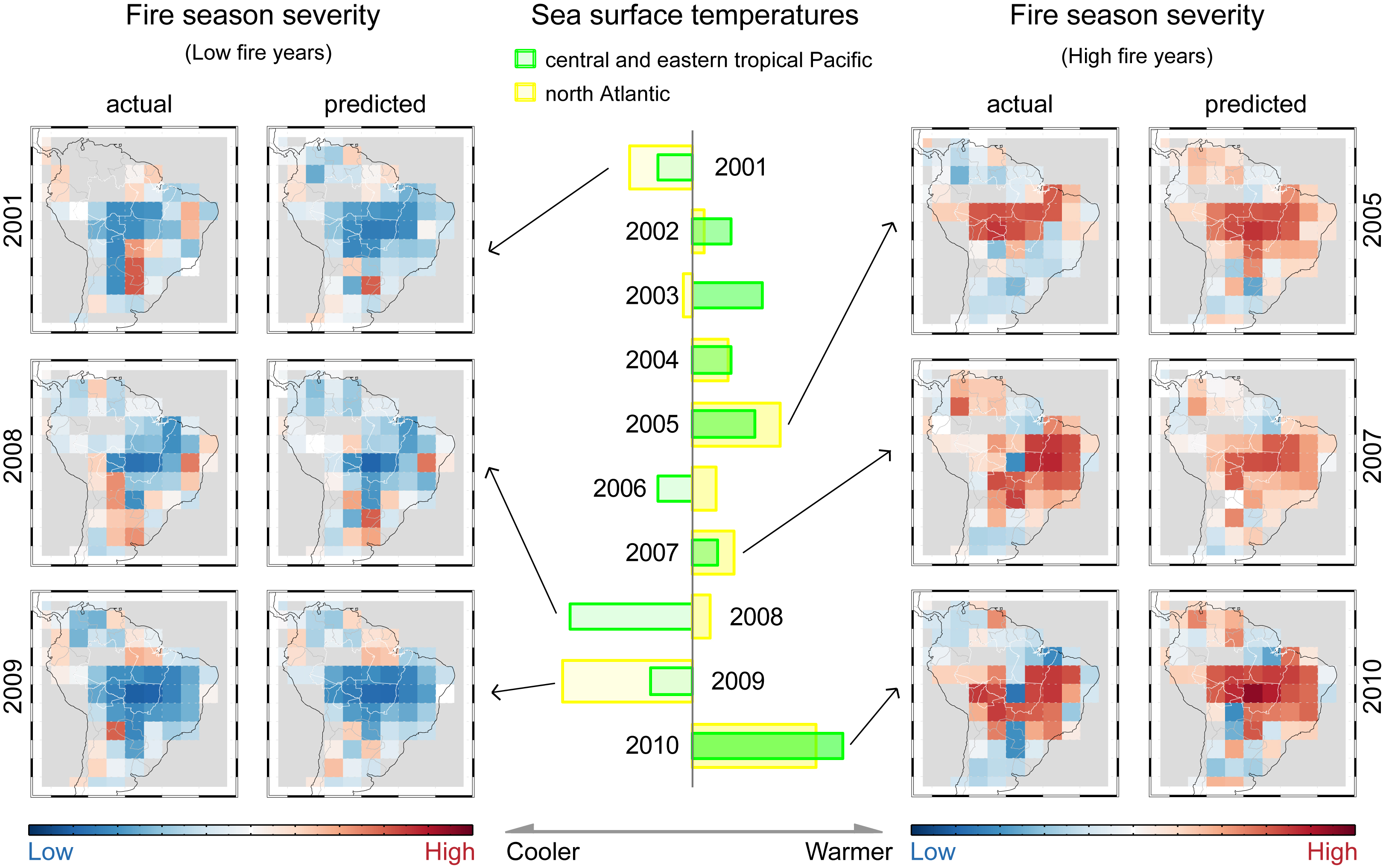
Predicting the severity of fire season in South America
The year-to-year changes in fire activity in many regions are found to be associated with the variations in large-scale climate pattern. The temperatures over ocean may provide early indications on the severity of a fire season. We developed a statistical model to forecast fire season severity with lead time of 3 to 5 months. This approach was first used in South America, and the results are presented in a journal paper on Science. We have published our annual fire forecast since 2012.
Despite the general success of our prediction, our forecast of the 2013 fire season was significantly higher than that detected by satellite. This was accompanied by over-predictions of North Atlantic hurricanes by several groups of scientists. We discovered that tropical North Atlantic ocean-atmosphere interactions can influence both phenomena and synchronize forest carbon losses in North and South Americas.
Climate influences on wildfires
The climate controls on wildfires can be inferred from satellite observations. By using active fire detection by MODIS, we found that forest and savanna fires in South America varied year-to-year in accordance with climate extremes. We further showed that the terrestrial water storage measured by GRACE can provide early warning information about the drought and fire. Similar fire sensitivity to climate was also found in the United States.
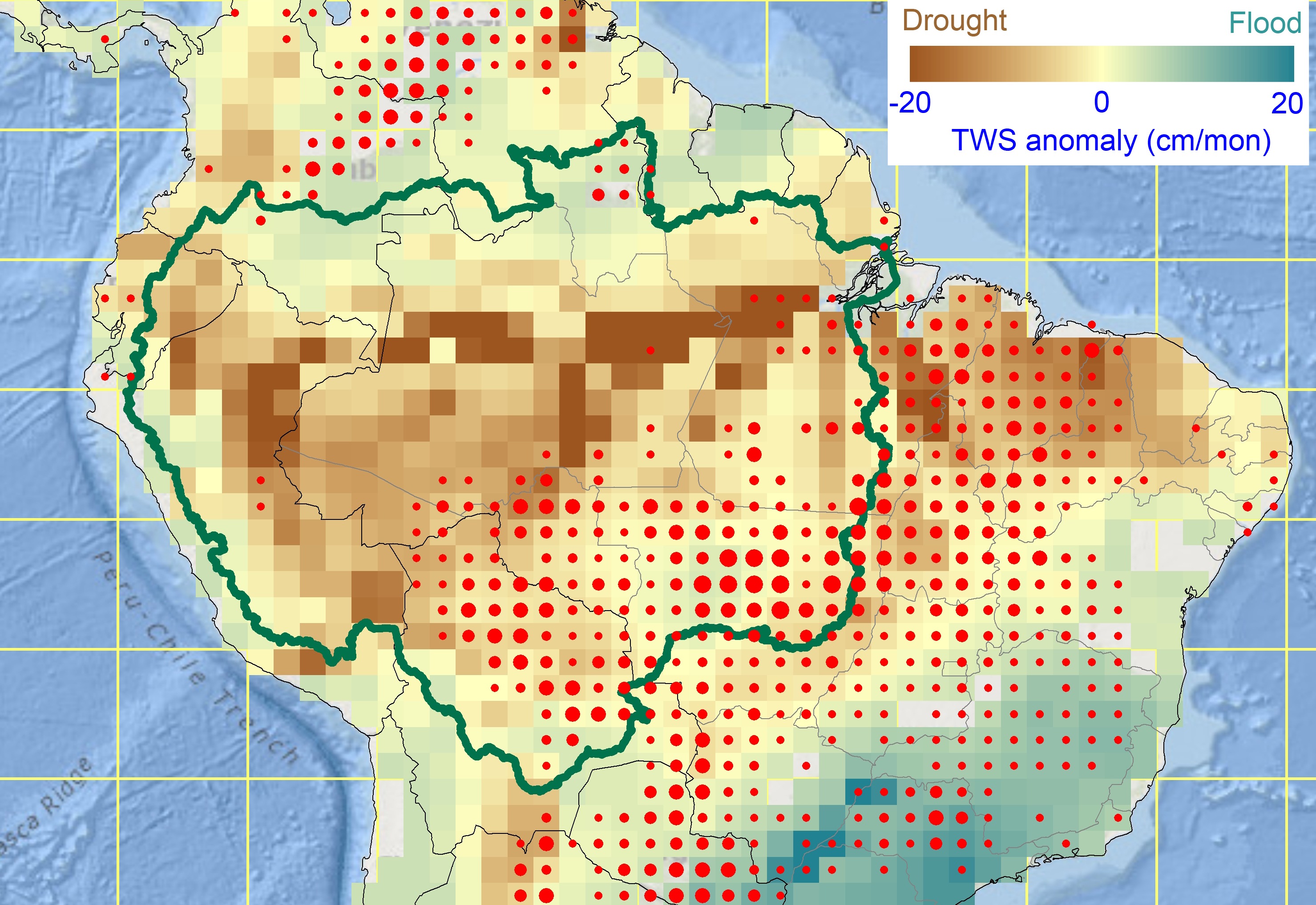
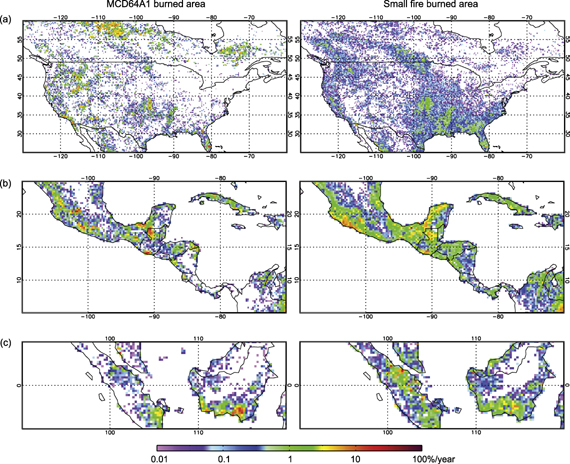
Quantification of global fire emissions
Many small fires occur each year that are well below the detection limit of the current global burned area products. By combining active fire dections and burned area observations, we developed a method for estimating burned area and biomass burning emissions from these small fires. Biomass burning carbon emission increased by 35% at a global scale when small fires were included. The newest version of Global Fire Emissions Database (GFED) is updated with this new approach.
Health effects from landscape fire emissions
Emissions from landscape fires affect both climate and air quality. In collaboration with environmental scientists, we used satellite observations and model simulations to quantify the health risks from fires. We estimated the average mortality attributable to landscape fires exposure was 339,000 deaths annually. In one of a most affected region - Southeast Asia, we showed the health risk has large interannual variability owing to the coupling between El Nino-induced drought and anthropogenic land-use change.
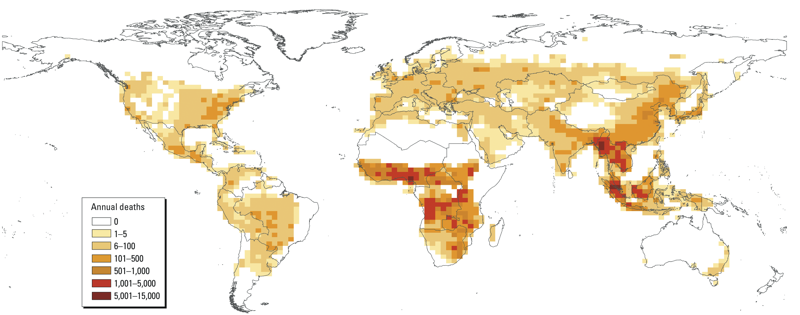
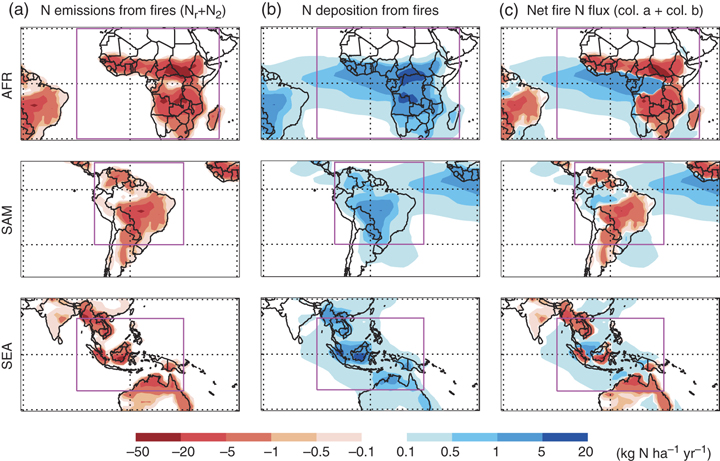
Nutrient transport from fires
Fires influence nutrient cycle within terrestrial ecosystems by changing the availability and mobility of the nutrients. We used satellite-derive estimates of fire emissions and a chemical transport model to estimate atmospheric nitrogen (N) fluxes from savanna and deforestation fires in tropical ecosystems. Our results provide evidence for cross-biome atmospheric fluxes of N that may help to sustain productivity in some tropical forests ecosystems.
Earlier research topics

Using MISR to quantify aerosol effect on TOA albedo
Using internally consistent albedo, aerosol, cloud, and surface data from the Multiangle Imaging Spectroradiometer (MISR) instrument onboard the Terra satellite, we estimated top-of-atmosphere (TOA) spectral albedo change (da) in the presence of aerosols over land, and its dependence on aerosol and surface properties.
Smoke plume injection height and pollutant transport
The elevation at which wildfire smoke is injected into the atmosphere has a strong influence on how the smoke is dispersed, and is a key input to aerosol transport models. By using the MISR INteractive eXplorer (MINX) software tool, we derived a database of wildfire smoke injection heights in Alaska and Yukon region. Compared with the Lidar-based aerosol layer height, this stereoscopic plume height database covers vastly great area and capture the core of major fires. Initial assessment of smoke injection from the Alaska- Yukon region during summer 2004 finds at least about 10% of wildfire smoke plumes reached the free troposphere. We assessed the impacts of the injection heights on simulated tranport of CO and aerosols over North America.

Aerosol indirect radiative effects
Anthropogenic aerosols enhance cloud reflectivity by increasing the number concentration of cloud droplets, leading to a cooling effect on climate. we provided the first observational evidence that the aerosol indirect effect can substantially alter radiative fluxes. We also systematically examined the spatially-resolved uncertainty in estimates of the first indirect aerosol forcing. Aerosol particles may also initiate ice formation in the upper troposphere through modes of action that include homogeneous freezing of solution droplets, heterogeneous nucleation on solid particles immersed in a solution, and deposition nucleation of vapor onto solid particles. We examined the possible change in ice number concentration from anthropogenic soot originating from different surface sources. We found the magnitude of the forcing in cirrus clouds can be comparable to the forcing exerted by anthropogenic aerosols on warm clouds.

Photochemical air pollution characteristics in Beijing
Photochemical pollution refers to the air pollution containing ozone and other reactive chemical compounds formed by the action of sunlight on nitrogen oxides (NOx) and non-methane hydrocarbons(NMHC), especially those in the automobile exhaust. Using field monitoring, data statistics and modeling methods, we studied the ozone pollution characteristics and the relationship between ozone and its precursors in Beijing metropolitan.
Assimilable Organic Carbon (AOC) in drinking water
Regrowth potential of heterotrophic bacteria in potable water depends mainly on the presence of assimilable organic carbon source. Since the addition of proper biocidic agents to water supplies is costly and may result in the formation of toxic derivatives, determination of the regrowth potential of bacteria in water is vital. We measured the content of AOC in the drinking water in Beijing city. Samples from the tap water pipes were collected. We inoculated two strains (P17 and NOX) into the samples step by step. By measuring the microbial growth, we determined the AOC in water samples.